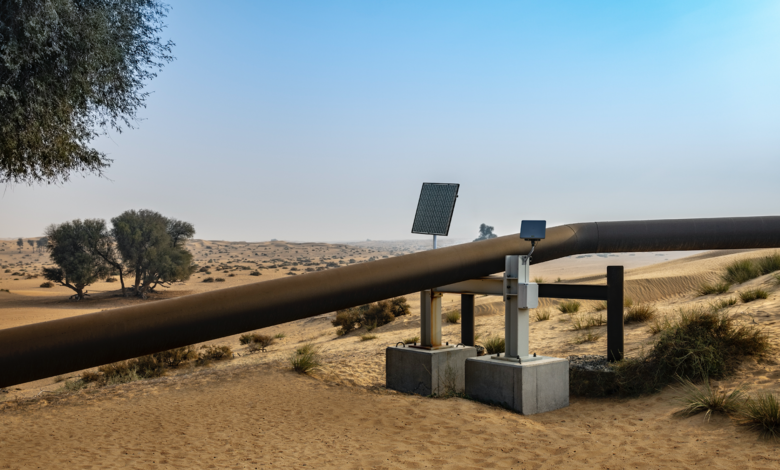
The number of Internet of Things (IoT) devices in use is predicted to almost triple from 9.7 billion devices in 2020 to more than 29 billion by 2030.
Businesses are increasingly realising that to maintain a competitive edge they must improve access to real-time data to drive operational efficiencies, boost commercial results and facilitate better sustainable outcomes. The best way to do this is with IoT-based solutions.
However, as the uptake of IoT technologies increases at pace, our research shows that 75% of businesses are still struggling to successfully deploy their IoT projects as a result of connectivity issues.
This is where robust, reliable satellite networks can make a significant difference, overcoming traditional connectivity challenges to help businesses harness the full potential of their IoT solutions. But how can businesses ensure they choose the right satellite solution for their specific needs?
Distil your data needs
While businesses often want all the data all the time, this is usually unmanageable in reality. The level of energy required to power an ‘always-on’ approach – not to mention the cost associated with this – make it an unrealistic option for most.
Instead, we recommend businesses identify which specific IoT-enabled insights will really have a tangible impact on their operations and yield a positive return on investment.
They should consider whether a particular piece of data would enable them to make important business decisions, how time-critical those decisions are and what level of precision is required to support this decision making.
Once they have evaluated their ‘mission critical’ data requirements, they can determine what their Minimum Viable Product needs are from their connectivity provider to ensure their IoT solutions can extract the required insights effectively.
Understanding this enables an accurate assessment of any limitations associated with a particular provider based on those specific connectivity needs. Can they, for instance, provide the required network frequency, bandwidth and latency?
Businesses should also assess how their data is being transported over the network. Industrial protocols and mappings to IP can create unnecessary overheads which can be optimised to significantly reduce data consumption with very little effort. Such optimisation also has additional benefits for businesses in terms of improved performance and lower power consumption.
For example, Modbus is a commonly used industrial protocol. It uses a client/server polling communication system where the client (typically a centralised SCADA system) must request a specific type of data from a specific contiguous range of memory addresses on the server, typically a Remote Terminal Unit or Programmable Logic Controller. The relevant values can often be quite easily re-mapped in the server so that a single request can get all the relevant values with little to no wasted data.
Finally, when considering the cost of a satellite solution to meet your data needs, rather than comparing it to another connectivity type that isn’t available, compare it to the cost (and overall business impact) of not having this connectivity at all. Businesses are often surprised at the cost effectiveness of extracting even a small amount of data via IoT solutions transmitted over satellite in relation to the major impact it can have on operational efficiencies.
Rethink your latency and bandwidth needs
Another key consideration for businesses exploring their connectivity options is the latency and bandwidth needed for successful transfer of data and key insights.
For some, a four-hour lag between data capture and transfer to HQ is fine, however, for others, a 5-10 second delay can mean the difference between life and death. Equally, a solution that can deliver critical information within a few minutes or hours may be better for some businesses than not getting this information at all.
With regards to bandwidth, some businesses will require always-on connectivity to enable constant monitoring of key assets or environments, while others will be satisfied with periodic access to facilitate longer term maintenance. Bandwidth is particularly important for businesses streaming data via video feeds, or those needing to regularly transfer large volumes of data.
Helpfully, satellite networks can be leveraged in numerous ways with varying cost implications depending on a business’s individual latency and bandwidth requirements. There are also multiple tools available to support bandwidth optimisation via satellite networks, improving performance and securing cost efficiencies for businesses.
Evaluate the strengths of different solution architectures
Businesses are increasingly looking to switch their existing IoT solutions from LAN or WiFi networks directly onto satellite networks through a process called ‘backhauling’. While this is often possible with a little finetuning, in some cases a substantially different approach is required.
Conventional SCADA systems commonly use IP backhaul to provide a significant volume of interactive exchanges used for real-time or near-real-time control systems. However, these techniques are sometimes inefficient and require edge processing to make the interactions more effective without sacrificing responsiveness.
Similarly, a direct-to-satellite approach can be more effective when data sources are smaller, or simpler and spread over a very wide area. Or, if data sources are close together, it can be economical to aggregate them using wireless technologies, such as LoRaWAN or Zigbee, etc. and then connect to HQ via a larger satellite link.
With many options available, businesses must carefully consider their specific needs and requirements to identify the optimal solution architecture for them.
As advances in the space continue, even more options will become widely available to help businesses extract further value from their IoT solutions. Techniques ranging from simple filtering and pre-processing of data to AI algorithms deployed on microcontrollers to enable tiny amounts of data to be sent over networks to highlight a key event are just the start of possible IoT advancements over the years to come.
Do not underestimate the harsh realities of operating in remote environments
For those operating in remote or challenging environments, satellite connectivity is a game-changer for enabling oversight of hard-to-reach assets, improving staff safety and productivity, and reducing the risk of potential downtime/lost productivity for mission critical assets.
However, such businesses also have several additional elements to consider so they identify the right satellite solution for their needs.
When working in remote environments, factors such as access to power, extreme temperature ranges, extreme weather, unrelenting UV rays, water and dust ingress, and even the risk of animals damaging your equipment need to be taken into consideration as potential risks to your day-to-day operations. For many in such environments, the cost of getting data from the field will be dominated by the cost of ruggedised sensors or controls rather than the actual communications.
Power consumption and maintenance of the overall system can also have a significant impact on total cost of ownership. So in some cases, it may be sensible to choose a more constrained communication method that consumes less power and does not require battery replacements, despite it potentially having a higher recurring cost per bit of data.
Security may be another factor that drives cost, including protecting physical access to avoid tampering with assets and communications.
We also advise businesses operating in remote locations to pay attention to the frequency band that their chosen method of communication uses. Some frequencies are more susceptible to local interference, while unlicensed or uncoordinated frequencies may have other constraints or risks associated with them in some countries or industrial environments.
Finally, additional challenges can arise in relation to varying geopolitical and regulatory environments across the world, so businesses should ensure they confirm the regulatory status of their communications service provider in the country they intend to use it.
With these additional considerations for those operating in remote or challenging environments to factor in, their end-to-end IoT solutions – from sensors to communications hardware to connectivity – must be developed with these elements front of mind.
Getting your connectivity priorities straight
While satellite connectivity is not a new proposition, there is a lot changing in this space. With more developments expected over the coming years, providers such as Inmarsat are well-placed to support businesses as they explore their connectivity requirements.
Our ELEVATE programme offers an ecosystem of experts and guidance to help businesses identify the right solution for their needs, as well as support solution builders looking to scale their offerings and reach new audiences.
Ultimately, as more and more companies turn to IoT solutions to meet their business needs going forward, access to robust, reliable satellite connectivity is going to grow in importance too.
For some, a satellite will complement other connectivity methods, providing back-up where needed to provide highly reliable, ‘always-on’ solutions. For others, a satellite may be required as the sole network.
Either way, to ensure success, businesses must treat their connectivity needs as a top priority and carefully consider the role satellite can play in their IoT technology selection sooner rather than later.




